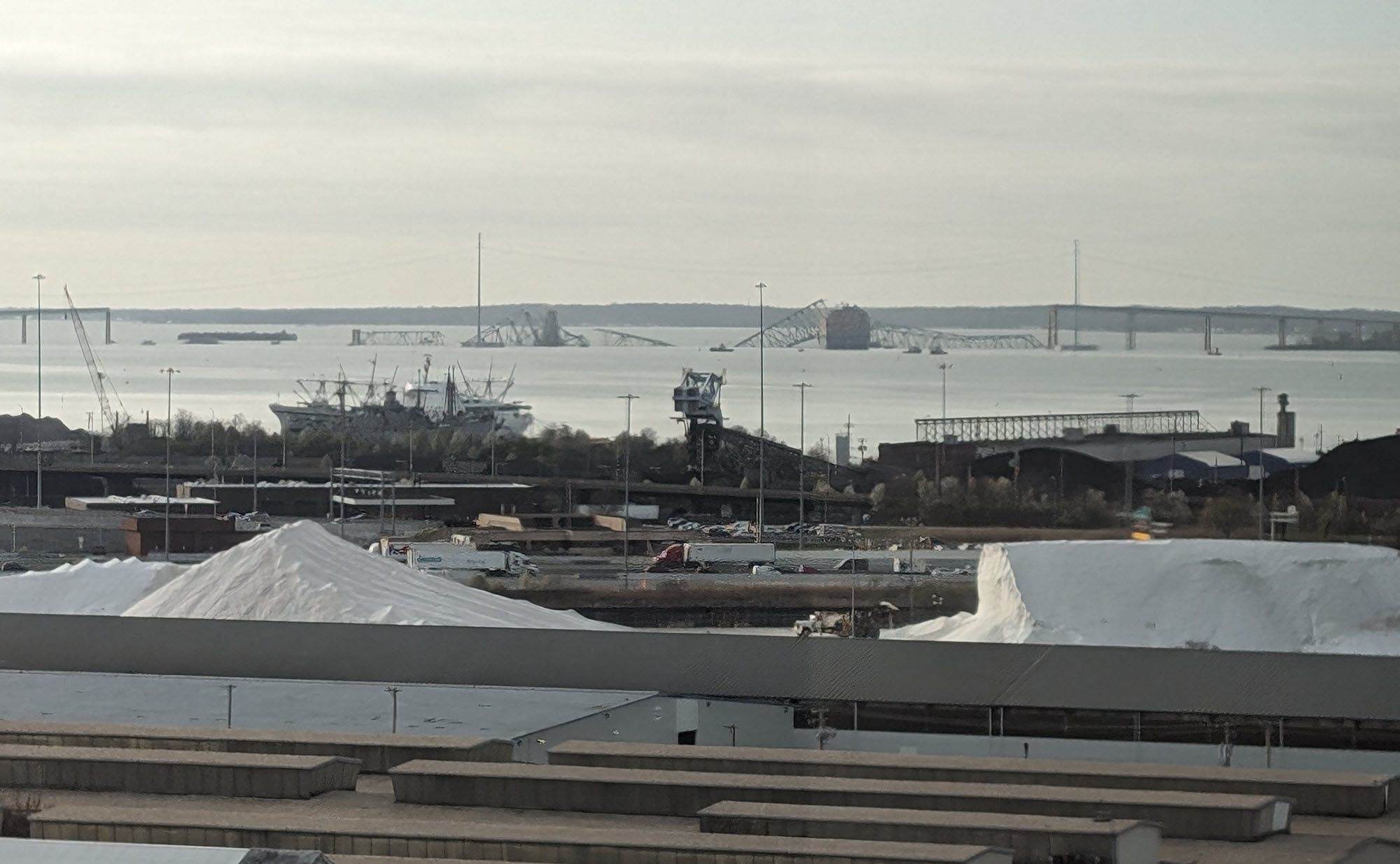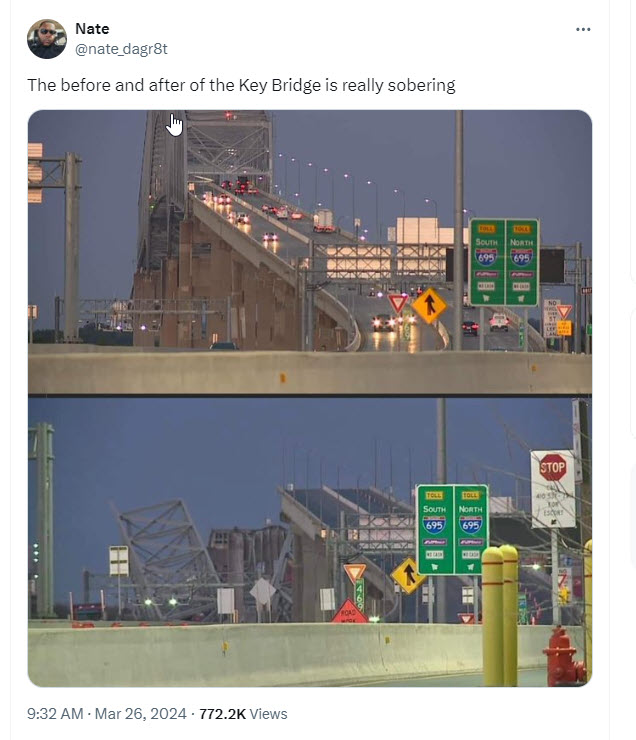 Alyssa Sooklal
Alyssa Sooklal The civil engineering world awoke Tuesday morning to the terrible news of the Francis Scott Key Bridge collapse in Baltimore.
At 1:27 a.m., a container ship leaving the Port of Baltimore collided with one of the bridge’s support columns, causing the bridge to collapse into the Patapsco River.
Several vehicles were on the bridge at the time of the impact and were plunged into the river. Multiple contractors also were on the bridge repairing potholes, said Maryland Transportation Secretary Paul Wiedefeld.
As of Tuesday afternoon, search-and-rescue operations continued, and it was unclear how many people were killed or injured during the collapse.
The Francis Scott Key Bridge opened March 23, 1977, as the final link in the Baltimore Beltway (Interstate 695). With a main span of 1,200 feet, it was the second-longest continuous-truss bridge in the United States.
While it’s impossible to know yet what led to the tragedy, there is no question that such an infrastructure disaster hits particularly close to home for civil engineers.
Here are some immediate, “gut-level” reactions from various ASCE members:
Marsia Geldert-Murphey is the ASCE 2024 president and a regional director for the Lochmueller Group, managing operations in Missouri and Illinois.
“My first thoughts are for the people and the families of those still missing who were on the bridge when it collapsed. Our most important mission as civil engineers is protecting the health, safety, and welfare of the public, so this tragedy affects us both personally and professionally.
“There will be plenty of time to figure out what happened and how to make sure it never happens again through future navigation requirements and other surviving consequences. But for now we are concerned about people’s lives.”

Dani Schroeder is a younger member leader and transportation engineer for Gannett Fleming in Philadelphia. Bridges and bridge engineering were her gateway into the profession.
"As someone who started her career in bridge design, I am heartbroken to hear of the center span collapse of the Francis Scott Key Bridge in Baltimore. My thoughts right now are with those affected by this tragic event, including the traveling public and the multiple contractors who were on the bridge repairing potholes during the collapse.
“Thank you to the brave folks who are carrying out efforts to rescue those involved and the community efforts coming together to respond in this time of need. As a member of the ASCE Region 2 Board of Governors, I am also sending love and support to our fellow ASCE Region 2 members who live near this key piece of infrastructure that carried roughly 35,000 people per day.”
Alyssa Sooklal is president of the ASCE Maryland Section Younger Member Group and a lifelong, proud Baltimorean, whose office as a water resources engineer at McCormick Taylor in downtown Baltimore overlooks the Key Bridge site.
“I woke up at 5 a.m. to a personal message from a first responder who was on-scene and shared the news with me. I turned on the local news and started to cry. I have used this bridge twice a day, multiple days a week, for the last four months, to go to a construction project site in Dundalk from my home in Baltimore County.
“Seeing the video of the mighty Francis Scott Key Bridge collapsing into the Patapsco River broke my heart. The Francis Scott Key bridge is near and dear to many Baltimoreans as a landmark and as a source of jobs for the city.
“We look at this bridge with a sense of pride on our regular commutes or travels as one of the most well-known, well-built bridges in the country. It stood tall above the Port of Baltimore, Fort McHenry, the Patapsco River, and many other landmarks of Baltimore.
“The 47th anniversary of the bridge’s opening just passed on March 23. As a homegrown Baltimorean, it is heartbreaking to see such a vital part of Baltimore crumble into the river. And as a member of the Baltimore community, it is gut-wrenching to think about the lives lost and disrupted during this disaster.
“I sit in my 11th-story civil engineering company office in Canton, Baltimore, which has a pristine view of both the Port of Baltimore and the wreckage of the Francis Scott Key Bridge, and I think about lives impacted, the first responders working tirelessly to aid in search-and-rescue efforts, the transportation issues that will occur with the loss of a major artery of the I-695 Beltway, the ships sitting in the channel waiting to be diverted, the challenges of rebuilding this magnificent civil engineering marvel, and the long-term economic impacts that this nightmare will have on the Port of Baltimore.
“But I also think about yesterday, March 25, which was Maryland Day. Yesterday, we celebrated the greatest state in the nation, and today, we get to show how Baltimoreans dig their heels in and support each other and the community during a tragedy.”
See ASCE President Marsia Geldert-Murphey’s official statement on the Key Bridge collapse.
Learn more in ASCE's free journal collection.



